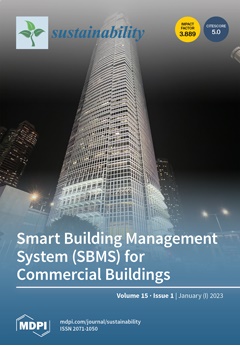Ver ítem
- xmlui.general.dspace_homeCentros Regionales y EEAsCentro Regional Salta - JujuyEEA SaltaArtículos científicosxmlui.ArtifactBrowser.ItemViewer.trail
- Inicio
- Centros Regionales y EEAs
- Centro Regional Salta - Jujuy
- EEA Salta
- Artículos científicos
- Ver ítem
Soil Properties and Bacterial Communities Associated with the Rhizosphere of the Common Bean after Using Brachiaria brizantha as a Service Crop: A 10-Year Field Experiment
Resumen
Intensive agricultural farming practices, such as monoculture, require long bare fallow periods and the overuse of agrochemicals, which compromise soil health over time. Increasing plant diversity in agroecosystems with service crops represents a promising alternative to achieving sustainability goals. However, how specific cover crop species influence the abundance and structure of soil bacterial communities remains to be solved. In this study, we
[ver mas...]
Intensive agricultural farming practices, such as monoculture, require long bare fallow periods and the overuse of agrochemicals, which compromise soil health over time. Increasing plant diversity in agroecosystems with service crops represents a promising alternative to achieving sustainability goals. However, how specific cover crop species influence the abundance and structure of soil bacterial communities remains to be solved. In this study, we assessed the effects of B. brizantha in two different agricultural cycles for 10 years in a common bean monoculture system in the northwestern region of Argentina (NWA) by measuring chemical, physical, and microbiological parameters in the rhizosphere, as well as by screening the rhizobiome using 16S rRNA sequencing. The ten-year inclusion of B. brizantha had a positive impact on properties in the rhizosphere compared to the common bean monoculture. The bacterial beta-diversity was different among treatments, but not the alpha-diversity. The most abundant phyla were Actinobacteria, Proteobacteria, Acidobacteria, Chloroflexi and Myxococcota. The predicted functions related to chemoheterotrophy and aerobic chemoheterotrophy were increased under B. brizantha treatments compared to the bean monoculture. The inclusion of the pasture B. brizantha contributed to restoring soil health and minimizing soil degradation.
[Cerrar]

Autor
Aban, Carla Luciana;
Larama, Giovanni;
Ducci, María Antonella;
Huidobro, Dina Jorgelina;
Abanto, Michel;
Vargas Gil, Silvina;
Perez Brandan, Carolina;
Fuente
Sustainability 15 (1) : 488. (January 2023)
Fecha
2023-01
Editorial
MDPI
ISSN
2071-1050
Documentos Relacionados
Formato
pdf
Tipo de documento
artículo
Proyectos
(ver más)
INTA/2019-PD-E2-I037-002/2019-PD-E2-I037-002/AR./Biodiversidad edáfica: componente clave para una gestión integral y sustentable del recurso suelo
Palabras Claves
Derechos de acceso
Abierto
 Excepto donde se diga explicitamente, este item se publica bajo la siguiente descripción: Creative Commons Attribution-NonCommercial-ShareAlike 2.5 Unported (CC BY-NC-SA 2.5)
Excepto donde se diga explicitamente, este item se publica bajo la siguiente descripción: Creative Commons Attribution-NonCommercial-ShareAlike 2.5 Unported (CC BY-NC-SA 2.5)

